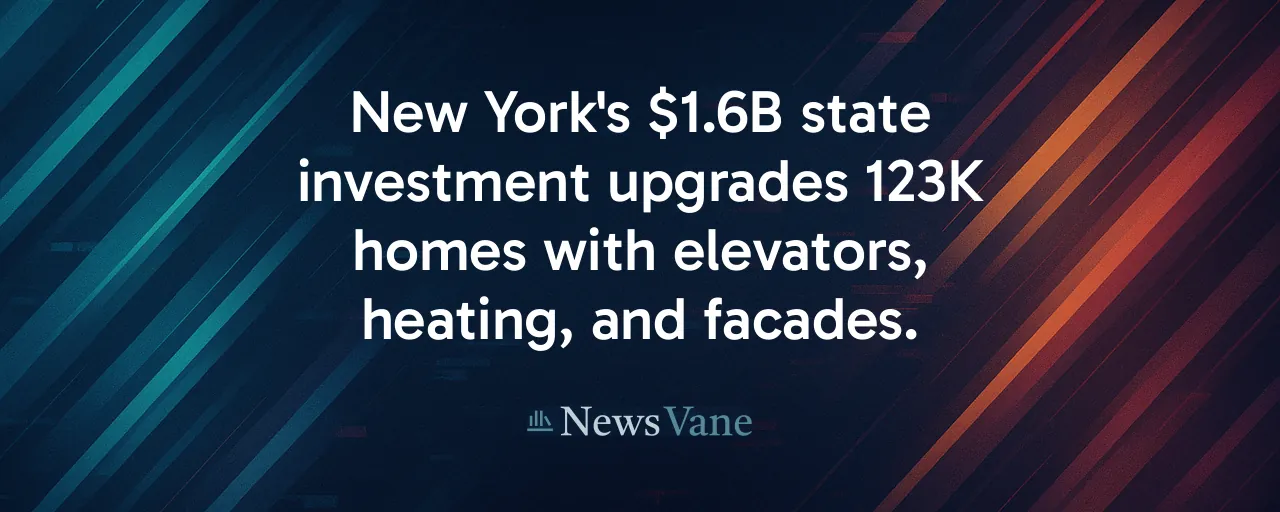A Milestone Amid Crisis
New York City's public housing system, home to one in 16 residents, just got a major lift. On July 7, 2025, Governor Kathy Hochul, Mayor Eric Adams, and NYCHA leadership announced the completion of 125 elevator replacements, 17 heating system upgrades, and 36 building facade renovations across 24 developments. Nearly 39,000 residents now enjoy safer, warmer homes, thanks to $1.2 billion in state funding. With an additional $365 million committed for 2025 and 2026, projects underway will soon reach 123,000 people across 75 sites.
This news marks a rare win for the New York City Housing Authority, a system grappling with a $78.3 billion repair backlog. Elevators break down over 100,000 times a year, boilers average 56 years old, and crumbling facades threaten safety. For residents, these upgrades mean fewer medical emergencies, better mobility, and renewed hope. The scale of the crisis demands more than one-time fixes. Can New York turn this momentum into lasting change?
The state's investment, channeled through the Dormitory Authority, signals a commitment to public housing at a time when federal support has dwindled. Since 2019, Albany has poured $1.6 billion into NYCHA, targeting life-safety hazards like faulty elevators and outdated heating. Money alone will not solve the problem. Governance, accountability, and innovative financing remain critical to ensuring these homes endure for future generations.
The Weight of Decades
NYCHA's challenges didn't appear overnight. Built during the New Deal and post-war boom, its 177,000 apartments were once a model of public investment. By the 1980s, federal subsidies began to erode, dropping over 40 percent in real terms since 2000. Maintenance deferred became maintenance denied. By 2018, federal oversight loomed after reports of lead-paint hazards and heat outages, forcing a monitorship that still binds NYCHA today.
Research paints a stark picture. Chronic elevator failures correlate with higher emergency-room visits, especially for seniors and residents with disabilities. Heating outages drive asthma hospitalizations, hitting NYCHA's 90 percent non-white population hardest. The physical-needs assessment estimates $78.3 billion in unfunded repairs through 2045, a figure dwarfing even New York's ambitious capital grants.
State leaders have stepped up where Washington faltered. Since 2021, three funding agreements have targeted boilers, elevators, and facades, with $450 million in 2021, $300 million in 2022, and $485 million in 2023. The 2022 Public Housing Preservation Trust law also unlocked new financing, aiming to rehabilitate 25,000 units. These efforts show progress. The gap between need and resources remains vast.
Money Meets Reality
The $1.6 billion investment is already transforming lives. New elevators reduce wait times and breakdowns, critical for high-rise residents. Upgraded boilers cut fuel costs by 20 to 30 percent, per state energy studies, while safer facades prevent falling debris. Construction jobs, often unionized, boost local economies. For residents, these changes restore dignity and security, letting them focus on work, school, or family instead of dodging outages.
Implementation is not flawless. Supply-chain delays for elevator parts and shortages of skilled labor slow progress. Renovations must often happen with tenants in place, adding complexity. Coordination with utility upgrades or asbestos removal risks cost overruns. These hurdles, while manageable, underscore the need for tight oversight to keep projects on track and within budget.
Blended financing offers a pragmatic path. National studies of HUD's Rental Assistance Demonstration show that combining federal vouchers, tax-exempt bonds, and state grants cuts capital backlogs by about 20 percent in five years. New York's Preservation Trust leverages similar tools, converting developments to Section 8 funding while preserving public ownership. If scaled carefully, this model could stretch dollars further without sacrificing tenant protections.
Balancing Oversight and Innovation
NYCHA's history of mismanagement raises valid concerns about how funds are spent. Federal monitors have flagged misreported hazards and inefficiencies, fueling calls for independent oversight. A professionally staffed Capital Planning Authority, appointed by state, city, and tenant leaders, could ensure accountability without derailing progress. Such a body would track metrics like repair times and energy efficiency, satisfying taxpayers while prioritizing residents.
Innovation also matters. The Preservation Trust, with statutory caps on rent at 30 percent of income, balances affordability with modernization. Leveraging surplus NYCHA land for affordable homeownership could fund repairs while adding community amenities. Adding broadband or solar roofs to renovation projects aligns with climate goals and cuts long-term costs, appealing to diverse stakeholders.
No single approach will fix NYCHA. Full privatization risks tenant displacement, while relying solely on public funds strains state budgets. Scholars advocate hybrid models, like public-trust structures with fiduciary boards, to insulate planning from political swings; they offer a sustainable way to preserve public housing.
A Foundation for the Future
New York's $1.6 billion investment is a bold step toward stabilizing NYCHA; it is only a start. The completed elevators, boilers, and facades prove that targeted funding can deliver real results, improving life for tens of thousands. Ongoing projects will reach even more. The $78.3 billion backlog looms large. Sustained operating funds are essential, alongside capital grants, to prevent new repairs from deteriorating.
Residents deserve homes that are safe, modern, and affordable. Achieving that requires blending state and federal resources with innovative financing, rigorous oversight, and resident input. Models like the Preservation Trust, paired with independent governance, can stretch limited dollars while protecting tenants. Compromises, like tying funds to performance metrics or leveraging land for community benefits, can bridge divides among stakeholders.
Public housing serves as a lifeline for 123,000 New Yorkers, extending beyond mere bricks and mortar. The progress announced on July 7, 2025, shows what's possible when leaders prioritize residents over politics. If New York builds on this foundation with discipline and creativity, it can redefine public housing as a model of equity and resilience for the nation.
